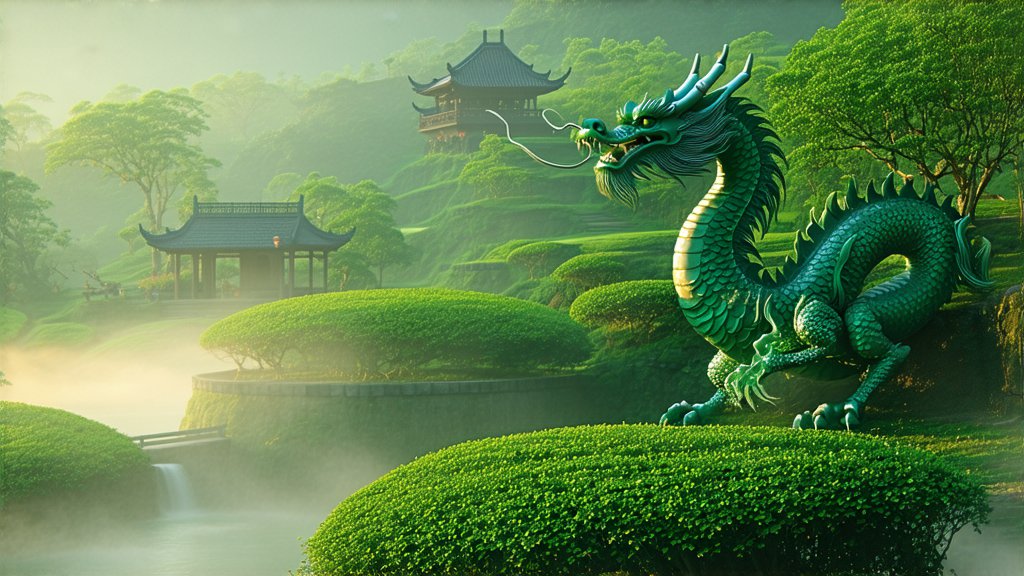
Longjing Tea, also known as West Lake Dragon Well (Xi Hu Long Jing), stands as a quintessential representation of China's rich tea heritage, particularly within the realm of green teas. This esteemed variety hails from the picturesque village of Longjing, nestled amidst the rolling hills surrounding West Lake in Hangzhou, Zhejiang Province. Its history spans over a thousand years, with legends tracing its origins back to the Tang Dynasty, though it was during the Qing Dynasty that Longjing Tea gained imperial favor and widespread acclaim.
Historical Context
The tale of Longjing Tea is interwoven with Chinese folklore and history. One popular story recounts how Emperor Kangxi of the Qing Dynasty discovered this exquisite tea during his southern inspections. He was so captivated by its unique flavor and aroma that he awarded it the prestigious title "Imperial Tea," sealing its status as a symbol of luxury and refinement. Over centuries, Longjing has continued to be celebrated not only for its taste but also for its connection to Chinese culture and philosophy, embodying harmony between man and nature.
Varieties and Cultivation
Longjing Tea comes in several grades, primarily determined by the time of harvest and the part of the tea plant used. The most prized is the pre-Qingming (before April 5th) or Mingqian tea, followed by Yuqian (rain before the Qingming Festival). These early spring harvests yield tender leaves that are rich in nutrients and flavor. The tea bushes themselves are meticulously cultivated in the fertile red soil around West Lake, benefitting from the region's mild climate and abundant rainfall.
Art of Pan-firing
What sets Longjing apart from other green teas is its distinctive pan-frying process, which contributes to its flat shape and vibrant green color. Freshly picked leaves undergo a careful sequence of steps: initial fixation in a hot wok to halt oxidation, followed by shaping and rolling to achieve the characteristic flat appearance. Skilled tea masters employ their hands to press and flatten each leaf, ensuring uniformity and enhancing the tea's visual appeal. Subsequent drying completes the transformation, locking in the tea's freshness and aroma.
The Art of Tasting Longjing
To truly appreciate Longjing Tea, one must engage in the traditional Chinese tea ceremony. Begin by selecting a transparent glass cup to observe the tea's dance as it infuses. Use water heated to approximately 80°C (176°F) to preserve the delicate flavors. Add about 3 grams of loose leaves per cup and let them steep for 1-3 minutes, adjusting based on personal preference.
As you take your first sip, notice the tea's smooth texture and subtle sweetness, often described as having a nutty or chestnut-like undertone. The aftertaste should be clean and refreshing, leaving a lasting impression on the palate. Observing the tea's color—a pale jade green—and the unfurling of the leaves can also enhance the sensory experience.
Conclusion
Longjing Tea is more than just a beverage; it embodies centuries of tradition, craftsmanship, and an intimate understanding of nature. From its storied past to its meticulous cultivation and unique processing techniques, every aspect of Longjing reflects the essence of Chinese tea culture. By partaking in the ritual of preparing and savoring this exceptional tea, one embarks on a journey through time and taste, connecting with a legacy that continues to thrive in the modern era.